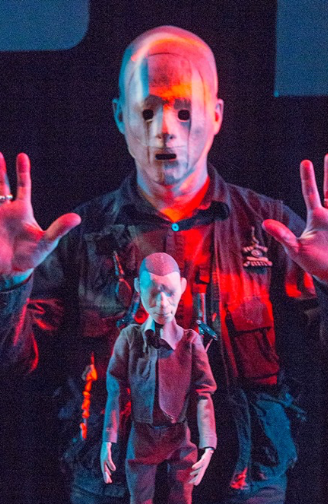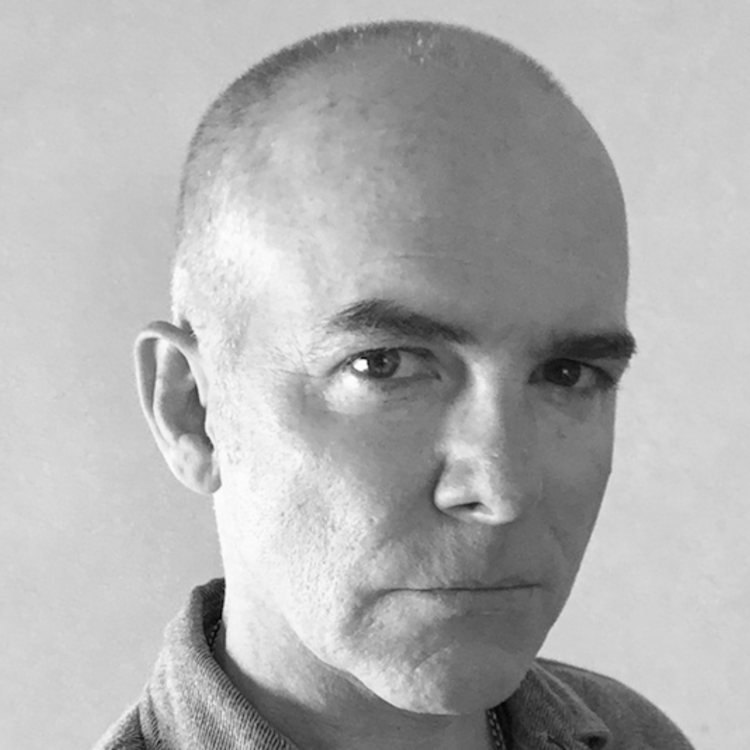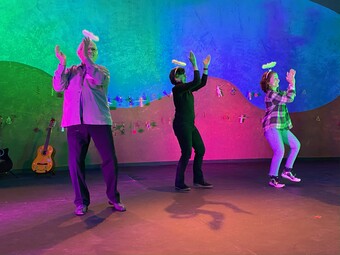Puppetry for the Modern Shaman
This week on HowlRound, we take a look at the many faces of American puppetry. Once again enjoying a resurgence in pop culture, puppet art’s impact on our nation's culture is deeper than most would think. This series will take a look at the art form through the eyes of some of its most innovative and stalwart thinkers. Find the full series here.
The puppeteer Bil Baird defined a puppet as “an inanimate figure that is made to move by human effort before an audience.” It is a serviceable definition with exception of the word inanimate. Inanimate simply means “not alive,” but the boundary between “alive” and “not alive” is not always clear, especially today when one considers life extension and cellular automata. In ancient cultures and animistic societies, all things were thought to be alive in the sense that they possessed a spiritual essence. I propose that animism is alive and well.
Shamanism is the root source of many branches of human endeavor, from art to medicine to theatre and psychology, to name a few. In our collective pre-history, shamanism developed as a set of techniques to heal, bring balance, and promote fertility. Shamans also served as guides for those making the journey to the land of the dead. These shamans invented puppets in an effort to embody forces of nature, animals, and mythological beings. They used these puppets to tell stories.
Humans are storytellers—we tell stories to ourselves to build our identities, and to make changes in our consensus reality.
The mythologist Joseph Campbell believed that ritual was the enactment of myth. Throughout history ritual mutated into countless forms both sacred and mundane. Performance and theatre for entertainment also took on myriad permutations too numerous to mention here. I assert that Performance for entertainment can still possess both sacred and mythic dimensions. Often this comes in the form of the fantastic, or the surreal and the supernatural. The puppet inhabits these dimensions quite comfortably. The puppet is an animal that talks. The puppet is a Devil with a contract. The puppet is a caricature of a politician holding a meat cleaver.
Throughout history humans have used esoteric, or “occult practices.” These techniques and teachings were designed to transform human consciousness and perception. Some activities were undertaken in an effort to gain spiritual enlightenment. Others were seen as “low magic” in that they sought out personal gain or power. Folded within these many layers lies the imagination, the subconscious, and the “collective unconscious.” For many practitioners of esoteric and occult techniques, it is of no importance if one believes the spirits, or entities that one may encounter come from within the shaman’s own subconscious, or from an outer “separate” source. The results are all that matters. Indeed, it may even serve the shaman to believe both things and neither concurrently.

As an artist and performer specializing in puppets, I attempt to create work by accessing my “Active Imagination,” a process espoused by psychologist Carl Jung, which is different than simple daydreaming. When one actively visualizes various archetypal entities and environments, the experience grows into something seemingly alive, outside the expectations, and wish fulfillment of the person imagining. It is this very practice that brought me to puppets.
I am greatly influenced by the Surrealists who had various techniques and games designed to access the subconscious so famously explored by Freud. The seemingly “magical” technique of discovering images in random patterns, or pareidolia, is akin to finding that a puppet will express its needs to the puppeteer. In my experience, the artist or shaman invests energy in creating objects designed to represent, or express the deep imagination, which results in a feedback from that dimension. A dialogue of signs and symbols can transpire, or a kind of “participation mystique.” Sometimes there will be a happy accident or coincidence that reveals a new path, character, or image. Intuition urges us to follow that path, to give voice to that character and to construct that image.
The puppet can do what the civilized human cannot. It can say what our sensitive ears are most afraid to hear.
Ritual objects are designed to focus the imagination of the shaman, externalize various elements and aspects of reality, and strengthen the deep imagination. By its very nature, a puppet is a ritual object. The ritual takes many forms, but the results are the same: to give life to matter. This transformation can evolve into a narrative. Time passes. Something or someone moves or speaks. The artist discovers messy mythic sacrifices or discrete pockets of the beginning, middle, and end. The puppet itself can transform. It can be miniscule or gigantic. It can be delicate or monstrous. The puppet can do what the civilized human cannot. It can say what our sensitive ears are most afraid to hear. We find ourselves compelled to cry or laugh despite the cultural bias that says puppets are meant for children.
Humans are storytellers—we tell stories to ourselves to build our identities, and to make changes in our consensus reality. Despite all of our efforts to explain our reality with mechanical metaphors, there appears to be no shortage of mysteries when we have the courage to look. Stories help us to look. Death, war, love, identity, and consciousness still confound our best attempts at understanding, but they are the beating hearts of our stories.
I prefer the definition of the puppet to be fluid and adaptable to change. For example, I embrace terms like “Material performance,” “Thingism,” and “Simulation theory.” The golem shakes hands with the robot in the uncanny valley. They build a fire and make shadows on the side of a boulder.
The imagination is like a möbius strip locked in a linking ring with the collective unconscious. It transcends our concept of linear time. Do we make puppets to fulfill our primal desire to imitate nature and ensoul matter, or are we exhibiting our ability to externalize consciousness? Is the puppet an echo from the future, coming back to let us know that our fate lies in decidedly virtual dimensions, downloaded simulations of domesticated primates unaware that we are simulations watching a knight slay a dragon on a miniature stage? This may sound like a fever dream born out of Gnostic paranoia and the sci-fi aesthetics of Phillip K. Dick or Terry Gilliam. Yet, when one considers that artificial intelligence and quantum computation are already with us, the possibility is interesting to consider.










Comments
The article is just the start of the conversation—we want to know what you think about this subject, too! HowlRound is a space for knowledge-sharing, and we welcome spirited, thoughtful, and on-topic dialogue. Find our full comments policy here
"Participation mystique," "consensus reality" ~ you've chosen words that are both accurate and poetic. Thanks for enlarging my vocabulary for what puppets are able to do!